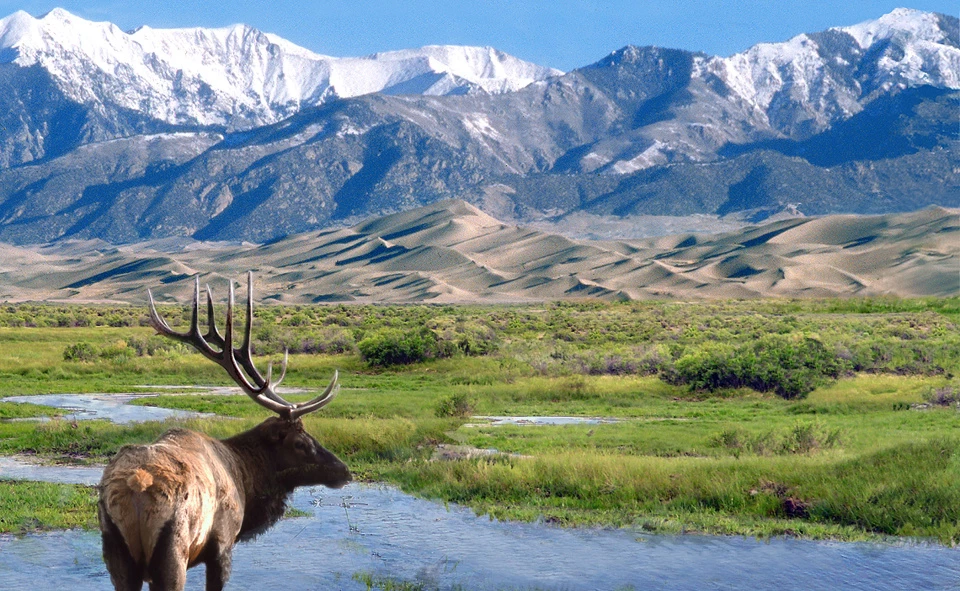Last updated: September 27, 2017
Article
What's In a Name? Discover National Park System Designations
The diversity of the parks is reflected in the variety of titles given to them. These include such designations as national park, national preserve, national monument, national memorial, national historic site, national seashore, and national battlefield park.
Although some titles are self explanatory, others have been used in many different ways. For example, the title “national monument” has been given to natural reservations, historic military fortifications, prehistoric ruins, fossil sites, and to the Statue of Liberty.
In recent years, both Congress and the National Park Service have attempted to simplify the nomenclature and to establish basic criteria for use of the different official titles. Brief definitions of the most common titles follow.

NPS photo
Natural Values
Areas added to the National Park System for their natural values are expanses or features of land or water of great scenic and scientific quality and are usually designated as national parks, monuments, preserves, seashores, lakeshores, or riverways. Such areas contain one or more distinctive attributes like forest, grassland, tundra, desert, estuary, or river systems; they may contain windows on the past for a view of geological history; they may contain imposing landforms like mountains, mesas, thermal areas, and caverns; and they may be habitats of abundant or rare wildlife and plantlife.- Generally, a national park contains a variety of resources and encompasses large land or water areas to help provide adequate protection of the resources.
- A national monument is intended to preserve at least one nationally significant resource. It is usually smaller than a national park and lacks its diversity of attractions.
- In 1974, Big Cypress and Big Thicket were authorized as the first national preserves. This category is established primarily for the protection of certain resources. Activities like hunting and fishing or the extraction of minerals and fuels may be permitted if they do not jeopardize the natural values. National reserves are similar to the preserves. Management may be transferred to local or state authorities. The first reserve, City of Rocks, was established in 1988.
- Preserving shoreline areas and offshore islands, the national lakeshores and national seashores focus on the preservation of natural values while at the same time providing water-oriented recreation. Although national lakeshores can be established on any natural freshwater lake, the existing four are all located on the Great Lakes. The national seashores are on the Atlantic, Gulf, and Pacific coasts.
- National rivers and wild and scenic riverways preserve freeflowing streams and their immediate environment with at least one outstandingly remarkable natural, cultural, or recreational value. They must flow naturally without major alteration of the waterway by dams, diversion, or otherwise alteration. Besides protecting and enhancing rivers, these areas provide opportunities for outdoor activities like hiking, canoeing, and hunting.
- National scenic trails are generally longdistance footpaths winding through areas of natural beauty. National historic trails recognize original trails or routes of travel of national historical significance.

NPS photo
Importance In History
Although best known for its great scenic parks, over half the areas of the National Park System preserve places and commemorate persons, events, and activities important in the nation’s history. These range from archeological sites associated with prehistoric Indian civilizations to sites related to the lives of modern Americans. Historical areas are customarily preserved or restored to reflect their appearance during the period of their greatest historical significance.- In recent years, national historic site has been the title most commonly applied by Congress in authorizing the addition of such areas to the National Park System. A wide variety of titles—national military park, national battlefield park, national battlefield site, and national battlefield—has been used for areas associated with American military history. But other areas like national monuments and national historical parks may include features associated with military history. National historical parks are commonly areas of greater physical extent and complexity than national historic sites. The lone international historic site refers to a site relevant to both U.S. and Canadian history.
- The title national memorial is most often used for areas that are primarily commemorative. They need not be sites or structures historically associated with their subjects. For example, the home of Abraham Lincoln in Springfield, Ill., is a national historic site, but the Lincoln Memorial in the District of Columbia is a national memorial. Several areas whose titles do not include the words “national memorial” are nevertheless classified as memorials. These are Franklin Delano Roosevelt Memorial, Korean War Veterans Memorial, Lincoln Memorial, Lyndon Baines Johnson Memorial Grove, Theodore Roosevelt Island, Thomas Jefferson Memorial, Vietnam Veterans Memorial, Washington Monument, and World War II Memorial in the District of Columbia; Jefferson National Expansion Memorial in Missouri; Perry’s Victory in Ohio; and Arlington House in Virginia.
- Originally, national recreation areas in the park system were units surrounding reservoirs impounded by dams built by other federal agencies. The National Park Service manages many of these areas under cooperative agreements. The concept of recreational areas has grown to encompass other lands and waters set aside for recreational use by acts of Congress and now includes major areas in urban centers. There are also national recreation areas outside the National Park System that are administered by the Forest Service, U.S. Department of Agriculture.
- National parkways encompass ribbons of land flanking roadways and offer an opportunity for driving through areas of scenic interest. They are not designed for high speed travel. Besides the four areas set aside as parkways, other units of the National Park System include parkways within their boundaries.
- One area of the National Park System has been set aside primarily as a site for the performing arts. This is Wolf Trap National Park for the Performing Arts, Virginia, America’s first such national park. Two historical areas, Ford’s Theatre National Historic Site, in Washington, D.C., and Chamizal National Memorial, Texas, also provide facilities for the performing arts.
